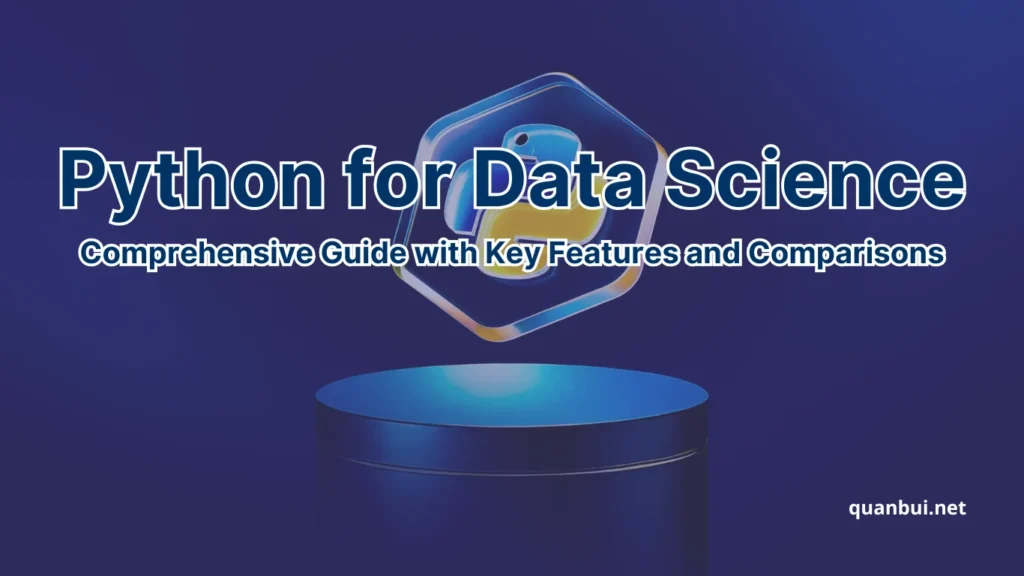Data Science
Python for Data Science: Comprehensive Guide with Key Features and Comparisons
Unlock the full potential of data with Python – the language that’s transforming the landscape of data science. Whether you’re a seasoned developer or just starting out, Python offers the tools and flexibility you need to turn raw data into actionable insights. Dive into this comprehensive guide to discover why Python is the go-to choice for data scientists worldwide.
Introduction
In the ever-evolving field of data science, Python has emerged as a cornerstone, empowering professionals to harness data’s full potential. Its seamless integration of simplicity and power makes it an indispensable tool for tasks ranging from data manipulation to complex machine learning algorithms. This guide delves into the many facets of Python, providing a roadmap for both beginners and experienced practitioners eager to enhance their data science skills.
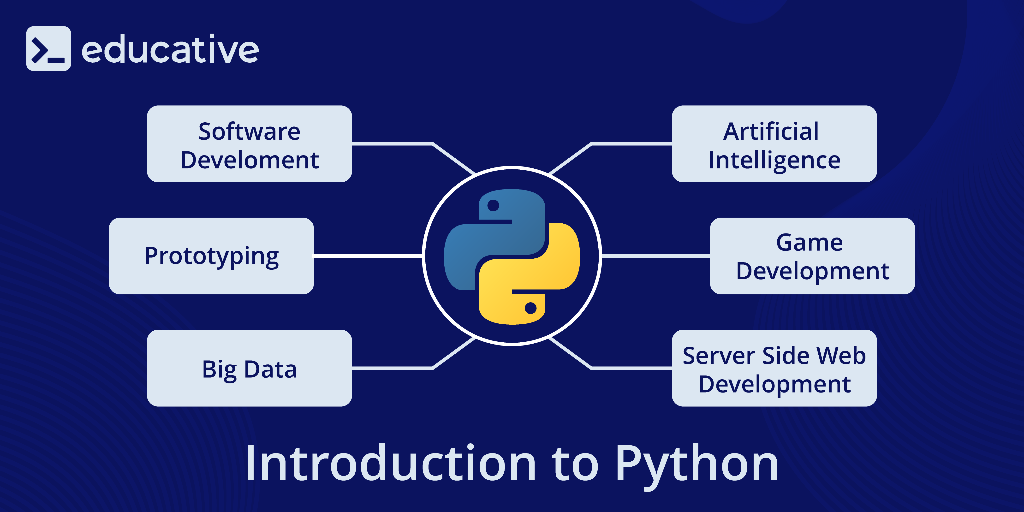
What is Python?
Python is more than just a programming language; it’s a versatile ecosystem that has revolutionized how we interact with data. Created by Guido van Rossum and released in 1991, Python emphasizes readability and simplicity, allowing developers to write clear and concise code. This focus on ease of use has propelled Python to the forefront of various domains, including web development, automation, and particularly data science.
Key Aspects of Python:
- Readability and Simplicity: Python’s syntax closely mirrors natural language, making it accessible to beginners and efficient for seasoned developers.
- Interpreted Language: As an interpreted language, Python executes code line by line, facilitating quicker debugging and iterative development.
- Extensive Standard Library: Python’s standard library provides modules and functions for common tasks, reducing the need for external dependencies.
Versatility in Programming Paradigms:
| Paradigm | Description |
|---|---|
| Object-Oriented | Organizes code into objects, promoting reusability and modularity. |
| Functional | Treats computation as the evaluation of mathematical functions. |
| Procedural | Uses a sequence of procedural calls to perform tasks. |
Python’s ability to support multiple programming styles adds to its adaptability, making it suitable for a wide range of applications. This flexibility is further enhanced by its dynamic typing and garbage collection, which help manage memory efficiently.
Moreover, Python boasts a vibrant community that continuously contributes to its growth. From extensive documentation to a plethora of third-party libraries, the Python ecosystem is ever-expanding, offering solutions to virtually any programming challenge. This community-driven approach not only accelerates innovation but also ensures that Python remains relevant in the face of emerging technological trends.

Key Features of Python for Data Science
Python’s standout features make it an ideal choice for data science, providing the tools and frameworks necessary to handle complex data workflows. Its combination of ease of use, comprehensive libraries, and robust community support creates a powerful environment for data analysis and machine learning.
Core Features:
- Simplicity and Readability:
- Python’s clean syntax allows data scientists to write and understand code efficiently, reducing the time spent on debugging and maintenance.
- Example:
python import pandas as pd data = pd.read_csv('data.csv') print(data.head())
- Rich Ecosystem of Libraries:
- Python’s extensive libraries cater to various aspects of data science, from data manipulation to machine learning.
- Popular Libraries:
- Pandas: Offers powerful data structures like DataFrames for data manipulation.
- NumPy: Provides support for large, multi-dimensional arrays and matrices.
- Matplotlib & Seaborn: Enable the creation of detailed and informative visualizations.
- Scikit-learn: Facilitates machine learning with a range of algorithms and tools.
- Integration Capabilities:
- Python easily integrates with other languages and technologies, allowing for seamless data import/export and workflow automation.
- It supports APIs and can interact with other software, enhancing its functionality in multi-platform environments.
- Community and Support:
- A large and active community contributes to a wealth of tutorials, forums, and documentation, making it easier for data scientists to find solutions and stay updated with the latest advancements.
- Versatility and Flexibility:
- Python can be used for various stages of the data science pipeline, including data collection, cleaning, analysis, visualization, and deployment.
Comparative Analysis:
| Feature | Python | Other Languages (e.g., R, Julia) |
|---|---|---|
| Ease of Learning | High | Varies |
| Library Support | Extensive (Pandas, NumPy, etc.) | Specialized but less extensive |
| Versatility | High (Web, AI, Automation) | Primarily Statistical or Domain-Specific |
| Community Support | Large and active | Growing but smaller |
Python’s ability to streamline the data science workflow, combined with its extensive library support, makes it a superior choice for both exploratory data analysis and the deployment of machine learning models. Its flexibility allows data scientists to experiment with different approaches and adapt to new challenges efficiently.
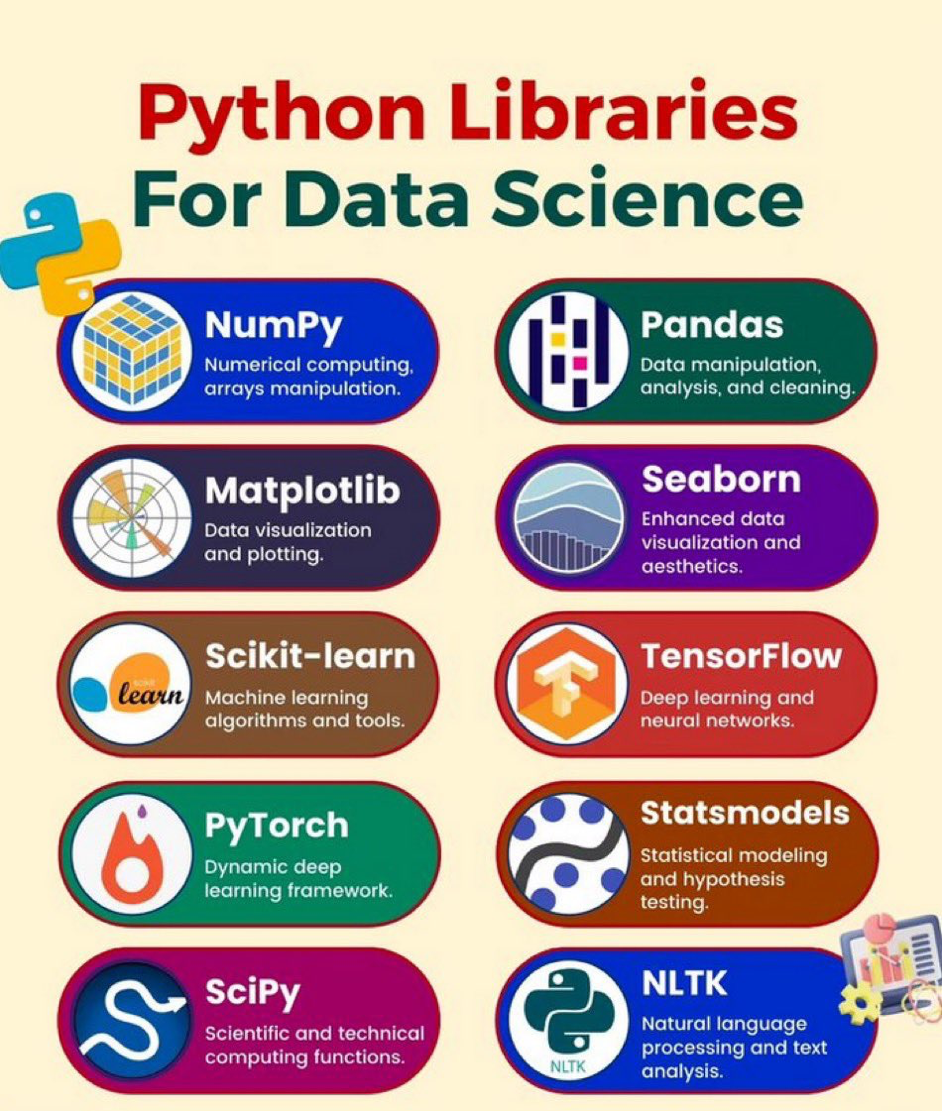
Getting Started with Python for Data Science
Embarking on a data science journey with Python begins with setting up the right development environment. This foundational step ensures that you have all the necessary tools and libraries to efficiently manage and analyze data. From installing Python to configuring essential libraries, establishing a robust setup paves the way for seamless data exploration and analysis.

Installing Python and Setting Up the Development Environment
Setting up your Python environment is a crucial first step in your data science journey. Here’s a detailed guide to help you install Python and configure your development environment effectively.
Step 1: Install Python
- Download Python:
- Visit the official Python website and download the latest version compatible with your operating system.
- Installation:
- Run the installer and follow the prompts. Ensure you check the option to add Python to your system PATH for easier access.
- Verify Installation:
- Open your command prompt or terminal and type: bash python –version
- This command should display the installed Python version, confirming a successful installation.
Step 2: Set Up Anaconda
Anaconda is a distribution that simplifies package management and deployment, tailored specifically for data science.
- Download Anaconda:
- Go to the Anaconda website and download the installer suitable for your OS.
- Installation:
- Run the installer and follow the instructions. Anaconda includes Python and essential data science libraries, streamlining the setup process.
- Verify Anaconda Installation:
- In your command prompt or terminal, type: bash conda –version
- This should display the Anaconda version, confirming a successful installation.
Step 3: Create a Virtual Environment
Virtual environments isolate project-specific dependencies, preventing conflicts between different projects.
- Create Environment: bash conda create -n myenv python=3.x
- Replace ‘3.x’ with your desired Python version.
- Activate Environment: bash conda activate myenv
Step 4: Install Essential Libraries
With your environment active, install the key libraries required for data science:
- NumPy: For numerical computations. bash conda install numpy
- Pandas: For data manipulation and analysis. bash conda install pandas
- Matplotlib: For creating visualizations. bash conda install matplotlib
- Scikit-learn: For machine learning algorithms. bash conda install scikit-learn
- Seaborn: For statistical data visualization. bash conda install seaborn
Recommendations:
- Integrated Development Environment (IDE): Consider using IDEs like Jupyter Notebook for interactive data analysis or Visual Studio Code for a more versatile coding environment.
- Version Control: Utilize Git for version control to manage and track changes in your projects effectively.
By meticulously following these steps, you’ll establish a robust foundation for your data science projects, enabling efficient data manipulation, analysis, and visualization as you delve deeper into Python’s capabilities.
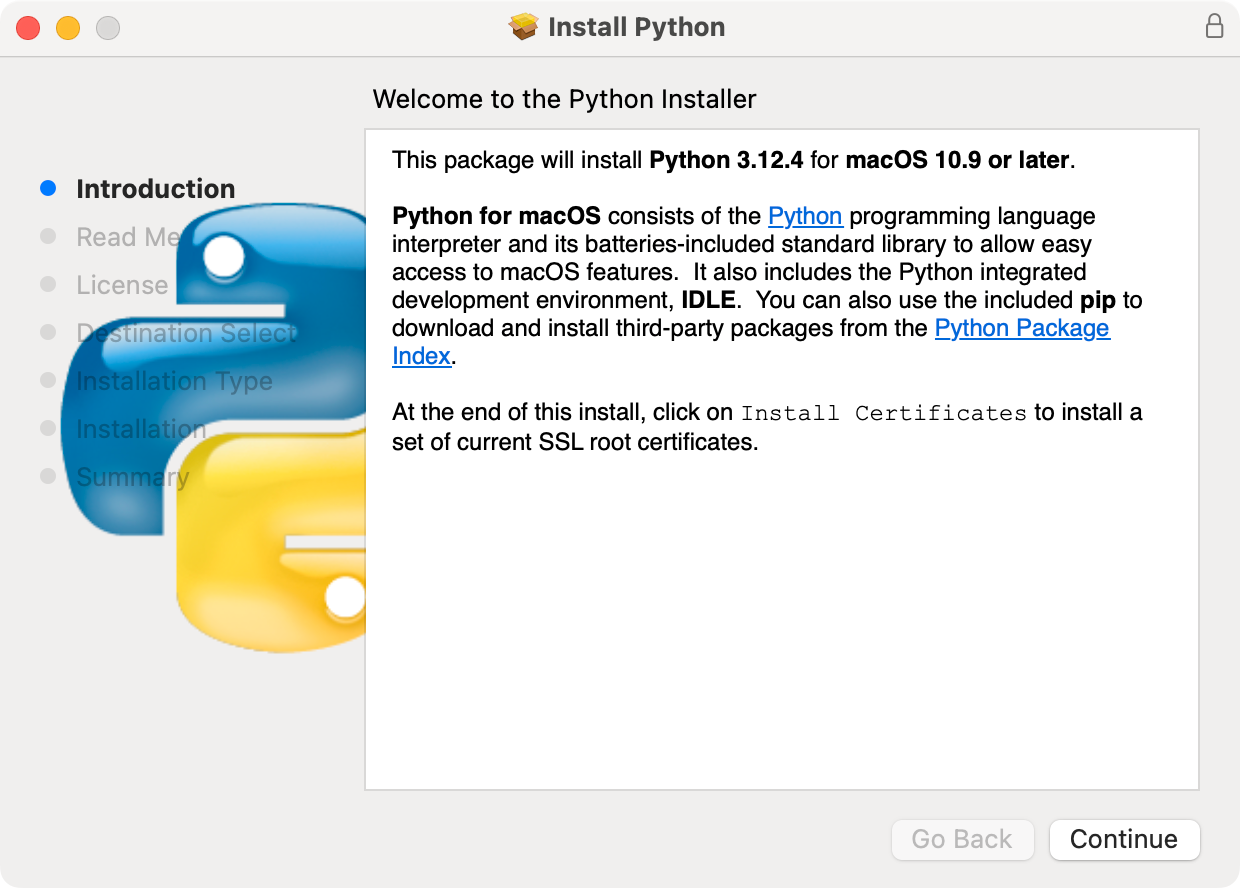
Essential Python Libraries for Data Science
Python’s strength in data science is largely attributed to its rich library ecosystem, which offers a plethora of tools tailored for various data-related tasks. Understanding these libraries and how to leverage them is fundamental to excelling in data science.
Core Libraries:
- NumPy – Numerical Computing
- Purpose: Provides support for large, multi-dimensional arrays and matrices, along with a collection of high-level mathematical functions to operate on these arrays.
- Key Features:
- Efficient array storage and operations.
- Mathematical tools for linear algebra, Fourier transforms, and random number generation.
- Pandas – Data Manipulation and Analysis
- Purpose: Offers data structures like DataFrames for handling and analyzing structured data efficiently.
- Key Features:
- DataFrame objects for handling tabular data.
- Tools for reading and writing data between in-memory data structures and various file formats.
- Data filtering, aggregation, and transformation capabilities.
- Matplotlib & Seaborn – Data Visualization
- Matplotlib:
- Purpose: A plotting library for creating static, animated, and interactive visualizations.
- Key Features:
- Extensive range of plots and charts.
- Highly customizable for precise control over visual elements.
- Seaborn:
- Purpose: Built on top of Matplotlib, Seaborn provides a high-level interface for drawing attractive and informative statistical graphics.
- Key Features:
- Simplifies complex visualizations with fewer lines of code.
- Integrates well with Pandas DataFrames.
- Matplotlib:
- Scikit-learn – Machine Learning
- Purpose: Provides simple and efficient tools for data mining and data analysis, built on NumPy, SciPy, and Matplotlib.
- Key Features:
- Implements a wide range of machine learning algorithms for classification, regression, clustering, and dimensionality reduction.
- Tools for model selection and evaluation.
Additional Libraries:
- TensorFlow & PyTorch: For deep learning and neural network models.
- SciPy: For scientific and technical computing.
- NLTK & SpaCy: For natural language processing tasks.
- Plotly: For interactive visualizations.
Choosing the Right Library:
- For numerical operations and handling arrays, NumPy is indispensable.
- When it comes to data manipulation and analysis, Pandas offers unparalleled functionality.
- For creating detailed visualizations, Matplotlib provides the necessary tools, while Seaborn enhances visual appeal with minimal effort.
- In the realm of machine learning, Scikit-learn is a go-to library for implementing various algorithms with ease.
Understanding the capabilities and appropriate use cases of these libraries allows data scientists to build efficient and effective data pipelines, ensuring robust analysis and insightful visualizations.

Why Python is the Best Choice for Data Science
Getting started with Python for data science opens the door to a world of possibilities, thanks to its unparalleled combination of simplicity and power. Python’s design philosophy prioritizes readability and ease of use, making it accessible to beginners while remaining robust enough for complex data science tasks. This dual appeal has solidified Python’s reputation as the leading language in data science, trusted by professionals across various industries.
Why Python is More Beginner-Friendly Than Other Data Science Languages
Python’s reputation as a beginner-friendly language stems from its intuitive syntax and clear semantics, which lower the entry barrier for newcomers to programming and data science.
Key Reasons:
- Readable Syntax:
- Python’s syntax is concise and mirrors natural language, making it easier to understand and write code compared to more verbose languages like Java or C++.
- Example: python for i in range(10): print(i)
- Minimal Boilerplate:
- Python requires fewer lines of code to perform the same tasks compared to other languages, enabling beginners to see results quickly and maintain their motivation.
- Example: python # Java equivalent to print numbers 1-5for(int i = 1; i <= 5; i++) { System.out.println(i); }
- Interactive Learning with Jupyter Notebooks:
- Jupyter Notebooks provide an interactive environment where beginners can write and execute code in small chunks, facilitating experimentation and immediate feedback.
- This feature is particularly beneficial for learning and visualizing data science concepts.
- Comprehensive Documentation and Tutorials:
- Python boasts extensive documentation, tutorials, and a supportive community, making it easier for beginners to find resources and get help when needed.
- Platforms like Codecademy and Kaggle offer interactive Python courses tailored for data science.
- Versatile Applications:
- Python’s ability to be used in various domains (web development, automation, data analysis) allows beginners to apply their skills in multiple contexts without having to learn new languages.
- This versatility encourages learners to explore different aspects of programming and data science.
Comparative Advantage:
| Aspect | Python | Other Languages (e.g., R, Julia) |
|---|---|---|
| Syntax Complexity | Simple and clean | Often more complex and verbose |
| Learning Curve | Gentle, suitable for non-programmers | Steeper, especially for statistical syntax |
| Community Support | Large and active | Smaller, more niche communities |
| Versatility | High (supports multiple paradigms) | Specialized to specific tasks |
| Resource Availability | Abundant tutorials, courses, forums | Limited compared to Python |
Personal Insight:
As someone who has transitioned from a non-technical background into data science, Python’s user-friendly nature was instrumental in my learning process. The ability to write clear and straightforward code allowed me to focus on understanding data science concepts without getting bogged down by complex programming details. Additionally, the active community provided support and resources that were invaluable during my learning journey.
Why Python Has the Most Comprehensive Data Science Ecosystem
Python’s dominance in data science is largely due to its comprehensive ecosystem, which encompasses a wide array of libraries, frameworks, and tools that cater to every aspect of data analysis and machine learning.
Core Components:
- Extensive Libraries:
- Data Manipulation: Pandas, NumPy.
- Visualization: Matplotlib, Seaborn, Plotly.
- Machine Learning: Scikit-learn, TensorFlow, PyTorch.
- Statistical Analysis: Statsmodels, SciPy.
- Integrated Tools:
- Jupyter Notebooks: Interactive coding environment ideal for exploratory data analysis and sharing results.
- Integrated Development Environments (IDEs): Tools like PyCharm and Visual Studio Code enhance coding efficiency with features like debugging, autocomplete, and version control integration.
- Frameworks for Web Integration:
- Django and Flask: Allow for the deployment of machine learning models as web applications, enabling real-time data processing and user interactions.
- Big Data Integration:
- Libraries: PySpark integrates Python with Apache Spark for handling large-scale data processing.
- Tools: Dask provides parallel computing capabilities for handling datasets that exceed memory capacity.
Unique Ecosystem Strengths:
- Unified Workflow: Python’s ecosystem allows for a seamless workflow from data collection and cleaning to analysis, visualization, and deployment.
- Rapid Prototyping: The availability of high-level libraries facilitates quick experimentation and iteration, crucial for data science projects.
- Community Contributions: Continuous contributions from the community ensure that the ecosystem evolves to meet the latest data science needs and incorporates cutting-edge technologies.
Comparative Analysis:
| Ecosystem Feature | Python | Other Languages (e.g., R, Julia) |
|---|---|---|
| Library Diversity | Extensive and covers all data science aspects | Often specialized, less comprehensive |
| Tool Integration | High, with seamless interoperability | Limited by language-specific tools |
| Community Support | Large, active, and continuously growing | Smaller, more fragmented |
| Scalability | Strong support for big data and distributed computing | Varies, often less optimized for scalability |
| Deployment Flexibility | High, supporting web, cloud, and mobile | Limited, often requires additional tools |
Example Use Case:
Consider a data scientist working on a predictive analytics project. Using Python, they can:
- Data Collection and Cleaning: Utilize Pandas and NumPy to import and preprocess data.
- Exploratory Data Analysis: Employ Matplotlib and Seaborn to visualize data distributions and correlations.
- Model Building: Implement machine learning algorithms with Scikit-learn or deep learning models with TensorFlow.
- Deployment: Deploy the model as a web application using Flask, allowing users to input new data and receive predictions in real-time.
This end-to-end capability is a testament to Python’s comprehensive ecosystem, providing all the necessary tools within a cohesive environment.
Personal Insight:
In my experience, the comprehensive nature of Python’s ecosystem has streamlined the data science workflow, allowing me to focus more on analytical challenges rather than grappling with tool incompatibilities or limited functionalities. The ability to move fluidly between different stages of data processing and analysis without switching languages or platforms has significantly enhanced productivity and project outcomes.

Why Python is Preferred for AI and Deep Learning
Python’s prominence in artificial intelligence (AI) and deep learning is no coincidence. Its robust ecosystem, coupled with its simplicity and flexibility, makes it the preferred choice for developing sophisticated AI models and deploying them effectively.
Key Advantages in AI and Deep Learning:
- Powerful Libraries and Frameworks:
- TensorFlow: Developed by Google, TensorFlow is a comprehensive library for machine learning and deep learning, enabling the creation of complex neural networks and facilitating deployment across various platforms.
- PyTorch: Favored by researchers for its dynamic computation graph, PyTorch offers flexibility and ease of use, making it ideal for experimentation and developing novel AI models.
- Keras: An API running on top of TensorFlow, Keras simplifies the process of building and training neural networks with its user-friendly interface.
- Flexibility and Modularity:
- Python’s modularity allows developers to mix and match components from different libraries, enabling the creation of customized AI solutions tailored to specific needs.
- Its support for object-oriented, functional, and procedural programming paradigms provides the flexibility to implement various AI algorithms and architectures efficiently.
- Extensive Community and Research Support:
- A vibrant community contributes to the continuous development of AI and deep learning tools, ensuring that Python remains at the cutting edge of AI research.
- Access to a wealth of tutorials, research papers, and open-source projects accelerates learning and fosters innovation.
- Integration with Other Technologies:
- Python seamlessly integrates with other technologies and platforms, facilitating the deployment of AI models into production environments, cloud services, and mobile applications.
- This interoperability ensures that AI solutions can be scaled and adapted to meet real-world demands.
Comparison Table:
| Feature | Python | Other Languages (e.g., Java, C++) |
|---|---|---|
| Library Support | Extensive (TensorFlow, PyTorch, etc.) | Limited, often requires more effort |
| Ease of Prototyping | High, with dynamic typing and simple syntax | Lower, with more complex syntax and compilation steps |
| Community and Research | Large, active, and continuously growing | Smaller, less focused on AI research |
| Deployment Flexibility | High, integrates with various platforms | Limited, often requires additional tooling |
Personal Insight:
As an AI enthusiast, I found Python indispensable for developing and experimenting with deep learning models. The ease of implementing complex architectures with libraries like PyTorch and TensorFlow allowed me to focus on refining models and exploring innovative ideas. The active community and abundance of resources further facilitated ongoing learning and project development, making Python an irreplaceable tool in my AI toolkit.
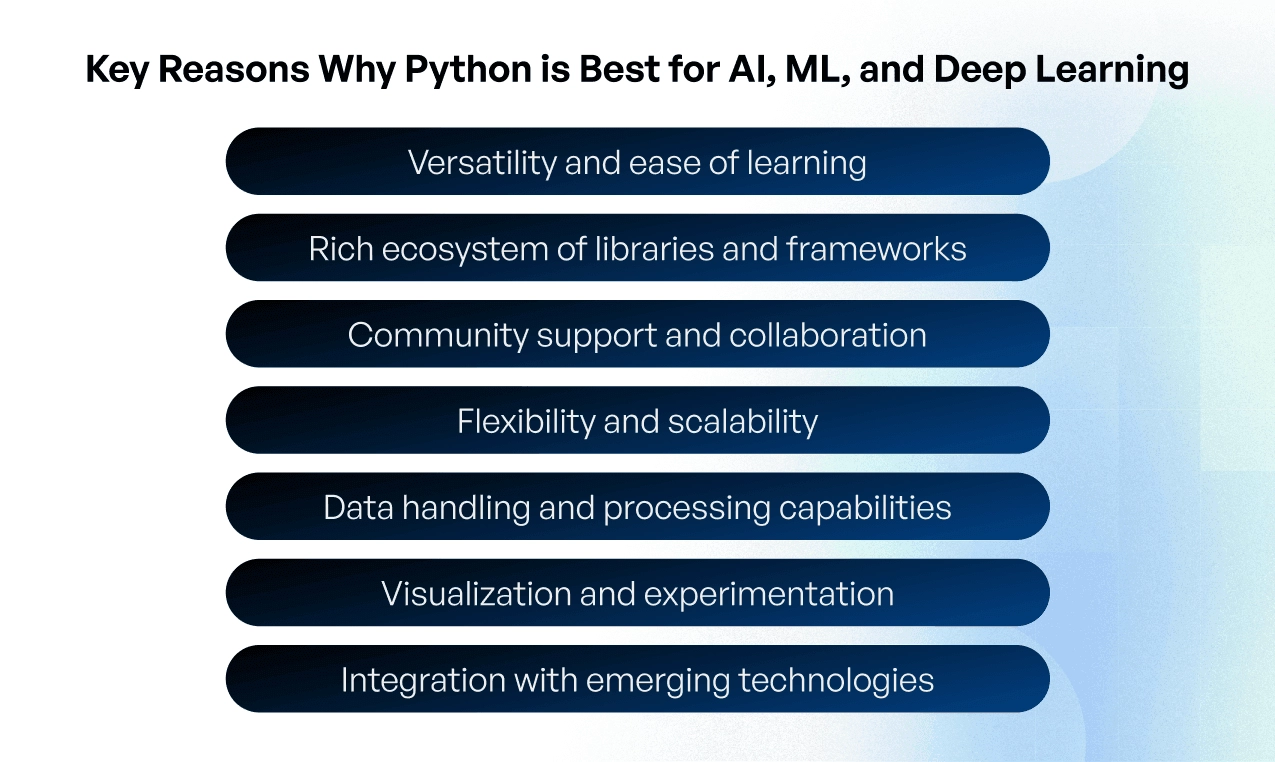
Comparing Python with Other Data Science Languages
Why Python is the best choice for data science? While Python holds a dominant position, it’s essential to evaluate how it stacks up against other prevalent languages in the field. Comparing Python with languages like R, SQL, and Julia sheds light on their respective strengths and suitability for various data science tasks.

Python vs. R: Which is Better for Data Science?
Python and R are two of the most popular programming languages in the data science arena, each bringing unique strengths and catering to different aspects of data analysis and statistical computing.
Python:
- General-Purpose Language: Python’s versatility extends beyond data science into web development, automation, and more.
- Extensive Libraries: Libraries like Pandas, NumPy, and Scikit-learn offer robust tools for data manipulation, analysis, and machine learning.
- Integration Capabilities: Python integrates seamlessly with other technologies and languages, facilitating the development of complex systems and web applications.
- Ease of Learning: Python’s clean and readable syntax makes it accessible to beginners and easier to maintain in large projects.
R:
- Statistical Analysis: R was specifically designed for statistical computing and excels in statistical modeling and hypothesis testing.
- Data Visualization: Packages like ggplot2 and Shiny allow for the creation of sophisticated and interactive visualizations.
- CRAN Repository: The Comprehensive R Archive Network (CRAN) offers a vast collection of specialized packages for various statistical techniques.
- Academic and Research Focus: R is widely adopted in academia and research settings, making it the preferred choice for statistical analysis.
Comparative Table:
| Feature | Python | R |
|---|---|---|
| Primary Use Case | General-purpose programming | Statistical analysis and visualization |
| Ease of Learning | High | Moderate to High |
| Library Support | Extensive for machine learning and data manipulation | Specialized for statistical methods |
| Integration | Superior integration with other tools and technologies | Limited integration outside statistical analysis |
| Community | Large, diverse, and active | Strong in statistical and academic communities |
When to Choose Python:
- Machine Learning and AI Projects: Python’s libraries like TensorFlow and PyTorch make it ideal for developing machine learning and AI models.
- Web Application Integration: If your data science project needs to integrate with web applications or APIs, Python’s capabilities shine.
- General-Purpose Needs: When data science tasks are part of a larger software development project, Python’s versatility is advantageous.
When to Choose R:
- In-Depth Statistical Analysis: For projects that require extensive statistical modeling, R’s specialized functions and packages provide robust support.
- Academic Research: R is often the language of choice in academic settings due to its focus on statistical computing and rich visualization capabilities.
- Data Visualization: When the primary goal is to create advanced and interactive visualizations, R’s ggplot2 and Shiny are unparalleled.
Personal Insight:
In my professional experience, the choice between Python and R often hinges on the project’s specific requirements. While Python offers a broader range of applications and better integration capabilities, R provides unparalleled strength in statistical analysis and visualization. This complementary nature means that having proficiency in both languages can be highly beneficial, allowing data scientists to leverage the strengths of each as needed.

Python vs. SQL: When to Use Each for Data Analysis
Python and SQL are both integral to the data analysis workflow, but they serve distinct purposes and excel in different aspects of data management and manipulation.
Python:
- Versatility: Beyond data manipulation, Python excels in machine learning, automation, and building data-driven applications.
- Advanced Analytics: Python’s libraries support complex computations, statistical analysis, and predictive modeling.
- Data Visualization: Python provides robust tools for creating detailed and interactive visualizations.
- Integration: Easily integrates with various databases, APIs, and other data sources, enabling comprehensive data analysis workflows.
SQL:
- Data Management: SQL is primarily designed for querying and managing data stored in relational databases.
- Efficient Data Retrieval: Optimized for executing complex queries and retrieving specific data subsets quickly.
- Structured Data Handling: Ideal for operations that require structured data manipulation, such as joining tables and aggregating data.
- Transaction Management: Ensures data integrity and consistency through ACID compliance in database transactions.
Comparative Table:
| Feature | Python | SQL |
|---|---|---|
| Primary Function | General-purpose programming and advanced analytics | Querying and managing relational databases |
| Use Case | Machine learning, data visualization, automation | Data retrieval, data manipulation within databases |
| Complexity Handling | Handles complex computations and modeling | Efficiently handles complex data queries |
| Flexibility | Highly flexible, supports various data sources and formats | Limited to relational database operations |
| Ease of Learning | Relatively easy with extensive documentation | Requires understanding of database schemas and query syntax |
When to Use Python:
- Data Preprocessing and Cleaning: Python’s Pandas library is highly effective for cleaning and transforming data before analysis.
- Advanced Analytics and Machine Learning: When your analysis requires predictive modeling or complex computations, Python’s libraries offer the necessary tools.
- Building Data-Driven Applications: Python can be used to develop applications that interact with data dynamically, providing real-time insights and functionalities.
When to Use SQL:
- Data Retrieval from Databases: SQL is the go-to language for extracting specific data from relational databases efficiently.
- Database Management: Use SQL for tasks that involve maintaining and managing database structures, such as creating tables, indexing, and optimizing queries.
- Bulk Data Operations: SQL excels at performing bulk operations on large datasets within databases, such as batch updates or complex joins.
Personal Insight:
Throughout various projects, I have found that leveraging SQL for efficient data retrieval and Python for sophisticated analysis offers the best of both worlds. This combined approach allows for rapid data processing and insightful analysis, enhancing the overall efficiency and effectiveness of data science workflows.

Python vs. Julia: Performance and Scalability Considerations
Julia is a high-performance programming language that has been gaining attention in the data science community for its speed and efficiency. Comparing Python and Julia highlights their respective strengths and suitability for various data science tasks, particularly regarding performance and scalability.
Python:
- Performance: While Python is generally slower than compiled languages like C++, its performance can be enhanced using optimized libraries and just-in-time compilation tools like Numba.
- Scalability: Python scales well with the help of libraries such as Dask and frameworks like Spark, enabling distributed computing for large datasets.
- Ease of Use: Python’s simplicity and extensive ecosystem make it accessible and versatile, though it may require additional optimization for performance-critical applications.
Julia:
- Performance: Designed for high-speed numerical computing, Julia’s performance rivals that of low-level languages like C++, making it ideal for computationally intensive tasks.
- Scalability: Julia supports parallel and distributed computing out of the box, allowing it to handle large-scale data processing efficiently.
- Dynamic Typing with Speed: Combines the ease of dynamic typing with the speed of compiled languages, providing both flexibility and performance.
Comparative Table:
| Feature | Python | Julia |
|---|---|---|
| Execution Speed | Generally slower, optimized with C extensions or JIT compilers | Comparable to C++, significantly faster |
| Ease of Learning | High, with simple and readable syntax | Similar to Python, but with some unique features |
| Library Ecosystem | Extensive and well-established | Growing, but not as extensive as Python’s |
| Community Support | Large, active, and diverse | Smaller, but rapidly expanding |
| Parallel Computing | Supported through external libraries like Dask and Spark | Native support for parallel and distributed computing |
| Use Cases | Versatile, suitable for a wide range of applications | Ideal for high-performance numerical computing and large-scale simulations |
When to Choose Python:
- Versatile Projects: When projects require integration with web applications, automation, or diverse data science tasks, Python’s flexibility shines.
- Extensive Library Needs: For tasks that rely on a vast array of libraries and tools, Python offers unparalleled support.
- Community and Resources: Python’s extensive community provides abundant resources, tutorials, and support, making it easier to troubleshoot and innovate.
When to Choose Julia:
- Performance-Critical Applications: Projects that demand high-speed computations, such as real-time data processing or intensive simulations, benefit from Julia’s performance.
- Numerical and Scientific Computing: Julia excels in tasks that involve heavy numerical computations, making it ideal for engineering, physics, and advanced simulations.
- Scalability Needs: For applications that require built-in support for parallel and distributed computing, Julia offers a streamlined approach without relying on external libraries.
Example Use Case:
Consider a scenario where a data scientist needs to perform large-scale numerical simulations:
- Using Python:
- The data scientist might implement the simulation in Python, utilizing optimized libraries like NumPy for numerical operations.
- To enhance performance, they could integrate C++ extensions or use JIT compilation tools like Numba.
- For scalability, they would employ distributed computing frameworks such as Dask or Apache Spark.
- Using Julia:
- The simulation can be implemented directly in Julia, benefiting from its inherent high performance without the need for external optimizations.
- Julia’s native support for parallel and distributed computing allows the simulation to scale efficiently across multiple processors or nodes.
- The data scientist can leverage Julia’s built-in capabilities for handling large-scale computations seamlessly.
Personal Insight:
In high-performance projects, Julia’s speed and scalability offer significant advantages, reducing computation time and simplifying the implementation of parallel processes. However, for broader applications that require integration with diverse tools and libraries, Python remains unparalleled. This balance underscores the importance of choosing the right language based on project-specific requirements.
FAQs
- Why is Python preferred over other programming languages for data science?
- Python’s readability, extensive library ecosystem, and versatility make it a top choice for data science. Its ability to handle everything from data manipulation to machine learning and web integration streamlines the data science workflow.
- Can Python handle big data effectively?
- Yes, Python can handle big data efficiently using libraries like Dask and frameworks like Apache Spark. These tools enable Python to process and analyze large datasets seamlessly.
- Is Python suitable for real-time data analysis?
- Absolutely. Python’s performance can be enhanced with optimized libraries and just-in-time compilers like Numba, making it suitable for real-time data analysis applications.
- How does Python integrate with other technologies in data science projects?
- Python integrates smoothly with various technologies through APIs, web frameworks, and database connectors, allowing seamless communication with other software and systems involved in data science projects.
- What are the best resources to learn Python for data science?
- Excellent resources include online courses on platforms like Coursera, edX, and Udacity, comprehensive tutorials on websites like Real Python, and interactive learning through Jupyter Notebooks and Kaggle.
Key Takeaways
Python’s Readability: Simplifies coding and enhances productivity.
Comprehensive Libraries: Access to powerful tools for every stage of data science.
Robust Community: Offers extensive support and continuous innovation.
Versatility: Applicable across various domains beyond data science.
Scalability and Performance: Capable of handling large-scale and high-performance data science tasks with the right tools.
In conclusion, Python stands as the cornerstone of modern data science, offering an unmatched combination of simplicity, power, and flexibility. Embracing Python opens up a myriad of opportunities, enabling data scientists to transform data into meaningful insights and drive impactful decisions across various industries.
Conclusion
Python has undeniably cemented its position as the premier language for data science, owing to its exceptional blend of simplicity, versatility, and a rich ecosystem of libraries and tools. This comprehensive guide has explored Python’s fundamental attributes, from its easy-to-read syntax and powerful libraries to its robust community and integration capabilities, all of which contribute to its widespread adoption in the data science community.
The comparisons drawn between Python and other languages like R, SQL, and Julia highlight Python’s unique strengths and strategic advantages. While R shines in specialized statistical analysis and data visualization, Python offers a more generalized and versatile approach, capable of handling everything from basic data manipulation to complex machine learning and AI tasks. When pitted against SQL, Python’s flexibility stands out, allowing for more extensive data processing and integration with various applications. Moreover, in the high-performance domain, Python remains competitive, especially when combined with optimized libraries and tools.

